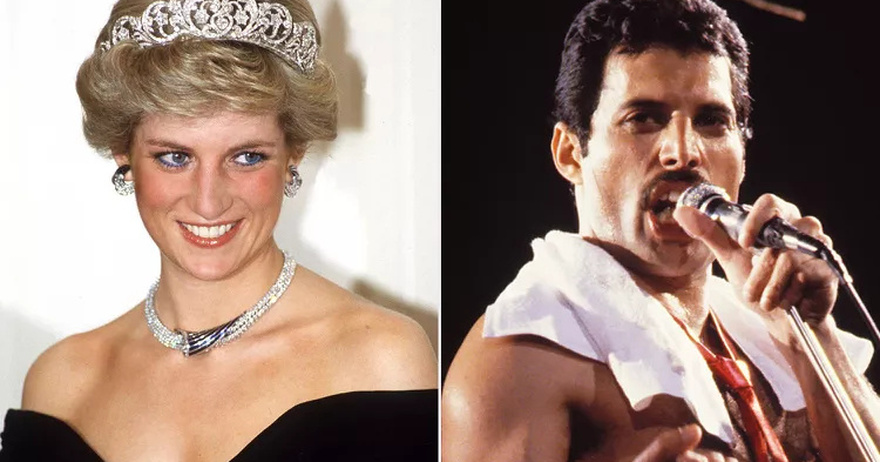In “Dianaworld,” a new biography excerpted exclusively by PEOPLE, Diana is said to have disguised herself in “male drag” — wearing an army jacket, leather cap and aviators — to slip undetected into a London gay bar
Princess Diana’s legacy continues to captivate decades after her death — and a new biography revisits the legendary night she disguised herself to sneak into a London gay bar alongside Queen frontman Freddie Mercury.
In Dianaworld: An Obsession (out April 29), Edward White examines the late Princess of Wales’ life, legacy and lasting impact as a global icon.
The vivid biography paints a picture of the Princess of Wales that the world didn’t know, spanning from her Spencer family’s generations of connections to the British royals before her marriage to the future King Charles to her lesser-known ambitions for her private life after their divorce, before her death at age 36 in 1997 following a car accident in Paris.
Read on for an exclusive excerpt below.
In Diana’s mythology, furtive nocturnal activity plays an important role as moments when she secretly revealed hidden aspects of her true self. At boarding school, so she told others, she crept out of her dormitory either to perform a dare or to practice her dancing all alone in the school hall; at other times she raided kitchen fridges in search of the brief, fleeting comfort that binge eating brought. And nighttime offered the possibility of reinvention and anonymous adventure; the best-known example being the alleged occasion when Diana took a trip to one of London’s most famous gay bars.
In her memoirs, the actress Cleo Rocos describes an evening she spent with Kenny Everett, Freddie Mercury, and Diana, who she had befriended in the late eighties. At some point in the evening, Rocos claims, Diana persuaded them to take her to the Royal Vauxhall Tavern, a place that Everett warned was “not for you . . . full of hairy gay men.” Diana was insistent, however, so Everett helped her disguise herself in male drag: “a camouflage army jacket, hair tucked up into a leather cap and dark aviator sunglasses. Scrutinizing her in the half-light we decided that the most famous icon of the modern world might just . . . JUST, pass for a rather eccentrically dressed gay male model.”
It seemed to work. “It was fabulously outrageous and so bizarrely exciting . . . no one, absolutely no one, recognized Diana.” They stayed for one drink and left. Diana returned to Kensington Palace and sent back Everett’s clothes the following day.
The story sounds far-fetched, like one of the many apocryphal yarns of royal transformation that litter folklore and fairytales. Equally, Diana at the gay bar could be said to have a Shakespearean quality, with a girl dressed as a boy slipping into an enchanted world. Yet there are other, slightly less fantastical, tales about Diana disguising herself on nights out, such as when she accompanied Hasnat Khan to Ronnie Scott’s jazz bar in Soho, the princess obscuring her true self beneath a wig and glasses.
These are very Diana updates of old tropes about royal and aristocratic women discovering themselves while in disguise in the strange surroundings of London at night. Even Elizabeth II has such a tale attached to her, the time when she and Margaret ventured out into the city crowds celebrating the end of the Second World War, vastly fictionalized as a journey into London’s illicit underworld in the 2015 film A Royal Night Out.
Irrespective of its veracity, the story of Diana in drag at the Royal Vauxhall Tavern has been taken up as an illustration of her connection with the gay community and a metaphor for her own search for a family in which she felt truly accepted.
…That sentiment is shared by Desmond O’Connor who wrote Royal Vauxhall, a cabaret musical based on the tale of Diana’s night out. The writing of O’Connor’s musical, in the mid-2010s, coincided with a spate of famous London gay venues going out of business, and it was feared that the Royal Vauxhall Tavern might also be at risk. It struck O’Connor as a powerful theme that united Diana’s life with the experiences of London’s gay community: both needed places to go where they could be themselves.
Diana may have had the luxurious residences of Kensington Palace, Highgrove, and Althorp at her disposal but, Royal Vauxhall contends, each of them was a gilded cage where only her material needs could be fully met.
It was in the guise of a different person that, for at least one night, she could discover herself.
I am a Single Mom Who Was Diagnosed with Colon Cancer at 33. I Do My Best to Push Through for My Young Daughter
Firefighter paramedic fatally stabbed in heart by patient he was trying to help
A few drops of this essential oil on the navel relieve pain and improve digestion
Top 10 Spices & Herbs to Support Arterial Health
